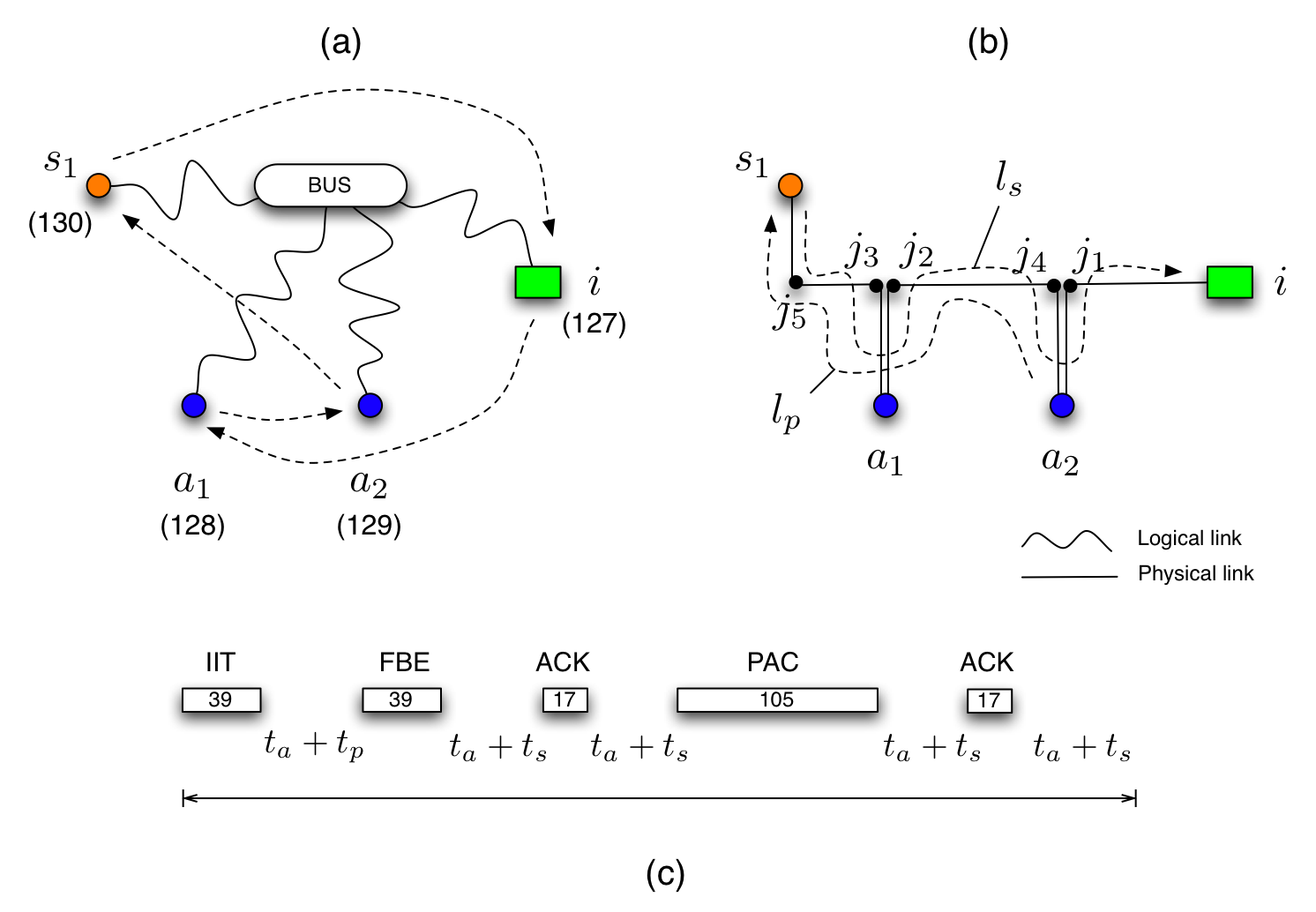

 |  |
|
|
ARCNET Bus ModelsARCNET Node ModelARCNET Node Cost ModelARCNET Node Delay ModelARCNET Bus ModelARCNET Bus Cost ModelARCNET Bus Delay ModelThe delay model for an archnet bus computes the toke rotation time. This delay is the worst case delay for the bus. An introduction to ARCNET can be found here.

Figure_arcnettokenring shows the ARCNET token ring protocol. Node are logically organized in a ring with an order that depends on the address of the nodes. Before sending a message, a node needs to wait for an invitation to transmit (IIT) that is sent by the previous node in the ring. The, a node sends a free buffer enquiry (FBE) message and waits for an acknoledge form the destination node. The node, then. sends the packet whose length can vary and waits for the final acknoledge from the destination node. The token rotation time can be computed knowing the nodes connected on the bus, the message period and the message length for each of them. This information is stored in the cosi::ThreadSet of each node. Each node on the bus can have multiple threads. Clearly, only sending threads (i.e. those threads with a non empty destination) contribute to the bus traffic. For a node, we can have the following cases:
Given a communication structure The token rotation time can be computed as follows:
The algorithm computes the total number of bits sent during a token rotation. This is worst case analysis because the longest messages only are considered. The total number of bits is divided by
Procedure Generated on Sun Sep 7 18:37:45 2008 for COSI by  1.5.4 1.5.4
|